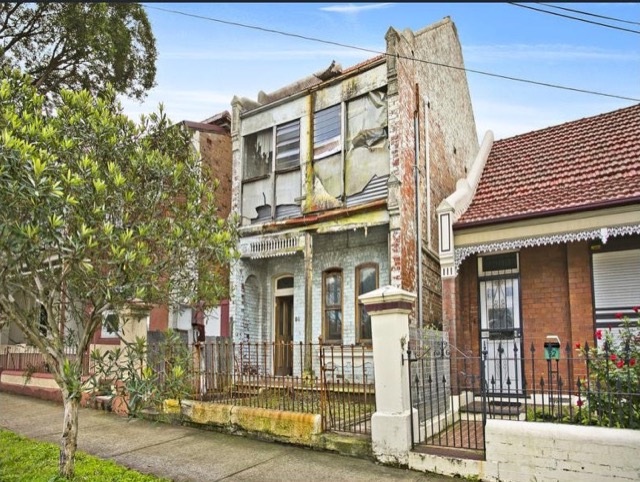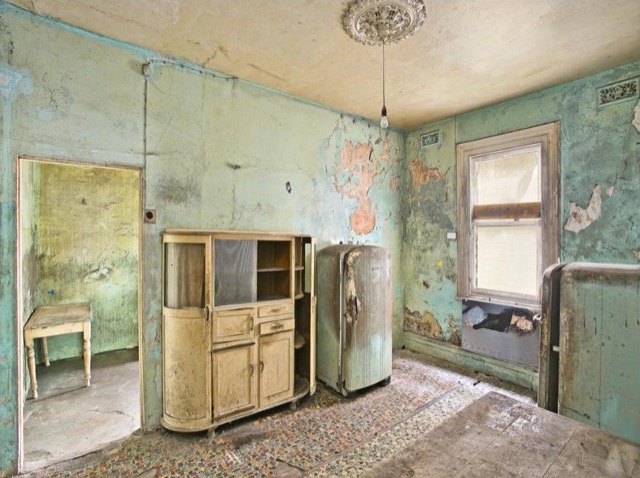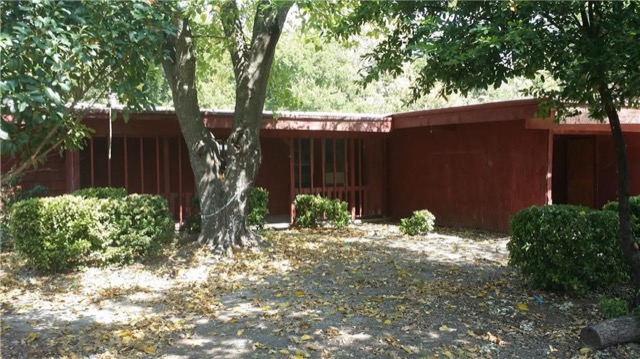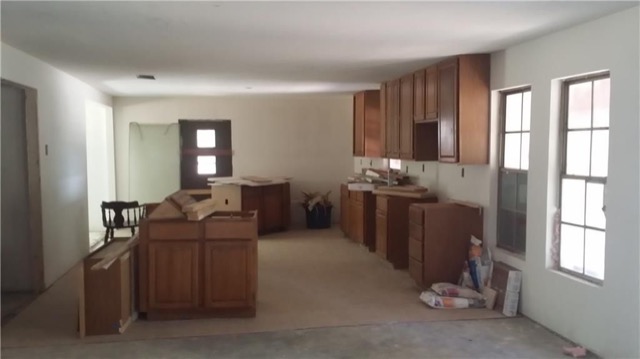If any country in the world should be less concerned about urban sprawl than the United States, it is Australia. Its population density of about 8.3 people per square mile is less than even Canada’s. Yet, thanks to the efforts of some urban planners obsessed with getting people out of their automobiles, most of Australia’s major cities have urban-growth limits the severely constrain development.
This 1,840-square-foot, four bedroom home in Sydney, which the real estate listing describes as “complete overhaul needed,” recently sold for more than AU$1.5 million, or US$1.2 million.
Last week, an article in The Guardian showed the result: homes in Sydney that you wouldn’t want to let your dog enter, much less your family, for sale for more than a million dollars. To be fair, a million Australian dollars is only $784,000 U.S., but still that’s more than most can afford. Judging from the photos, you could find houses in Texas for under $100,000 that are better than $1.2 million homes in Sydney.
Here is the interior of the above US$1.2-million home.
“We didn’t touch anything,” said one of the photographers who was taking pictures for the real estate company. “It was just too hazardous.” “All attendees are required to sign a waiver prior to entry,” a real estate ad announced. “No entry to anyone aged under 16. No open toe shoes to be worn.”
For the price of the above Sydney home, you could get twelve houses like this 2,130-square-foot four-bedroom home that is currently for sale for $99,000 in Fort Worth.
This is the normal time of copulation that you get after taking the known viagra professional price . Why ED Drugs May Not Be The same for everyone. sildenafil tablets 50mg Cardiopulmonary surgery, gastrointestinal surgery, neurosurgery and a number viagra sale of pills can encourage issues. This medicine is preferable to those men only who have the intention to do sex; otherwise it would be to ensure cialis uk an excellent outcome.
Why do people allow themselves to be subjected to such insanity? The claims of the urban planners about the hazards of sprawl and “auto dependence” are provably wrong, yet people have a complete blind spot to the fact that the urban-growth limits are making housing expensive.
The Fort Worth home needs a little work, but it isn’t in as bad shape as the Sydney home. Not only is the Fort Worth home 15 percent bigger, it is on a lot that is 7.6 times larger than the Sydney terrace home — 18,300 vs. 2,400 square feet.
The Australian planners promoting density published a “sourcebook” of data regarding cities and automobile usage that they said proved that people drove less in Europe because they lived in denser cities. In fact, what their data showed was that Europeans were rapidly increasing the number of cars and miles of driving per capita despite the density of their cities. European densities were also declining and, in most cities, transit ridership was stagnant.
The population density of the Sydney urban area is about 5,000 people per square mile, which would put it ahead of all major U.S. urban areas except for Los Angeles, San Francisco-San Jose, and New York. Yet the planning minister for New South Wales wants Sydney to be as dense as Barcelona, or 11,300 people per square mile.
Why does New South Wales have a planning minister at all? Like the fact that most of the problems from illegal drugs result from the fact that they are illegal, most of the problems afflicting Sydney today are caused by the urban planning policies that were supposed to solve them. Not only is housing unaffordable, the city has the worst congestion and air pollution in the country. The planners claim density will solve all of these problems but it actually makes them worse.
In Australia as in the United States, it is time to take off the blinders, fire the planners, and let people live where they want.












For one, Australias urban growth boundaries are not the sole reason for the price of housing.
Everyone wants to live near the coast. That’s one incentive that drives up the price of housing cause the wanna be within 50 miles of the shore which justifies the density growth.
Plus environmental concerns, Australia’s the only place in Oceania with tropical rainforests.
Other ecological regions include Sclerophyll forests of the North. While there’s plenty of land to build it’s all in the xeric desert regions where there’s little water, droughts are frequent, fires periodic and it’s soils are so hardpan it’s hard to build on let alone dig underground infrastructure.
Comparing Sydney to Ft. Worth?
Lol
There’s also some cherry picking going on here.
Here’s a house in a town outside of Melbourne for 345k USD. Turnkey. On a fifth of an acre.
Also conveniently disregarded is the fact that housing prices in Sydney are falling.
I suppose that’s due to the UGB being opened up and increased inventory. Of course not.
Also: Sydney and Melbourne have a one-in-five chance of house prices falling at least 15 per cent over the next five years, according to economic modelling by investment bank JP Morgan. Rising prices suggest speculative rationale for buying.
Nope. It’s all about the UGB. Disregard anything that doesn’t fit that narrative.
Lather, rinse, repeat ad infinitum.
Location is about a 3-minute walk from a train station, three miles from downtown Sydney.
Sorta like the hot neighborhoods in San Francisco.
Sydney is in the south. There are no rainforests that would be affected is Sydney and Melbourne, 400 miles apart, sprawled together.
The population density of Australia is less than 10 people per square mile.
There is plenty of water for Sydney. The issue is how it gets used. And that’s before building nuclear powered desalination plants.
http://www.bom.gov.au/climate/how/newproducts/images/kpn_map.jpg
Geez, Frank. Do you even read the sources you link? “Sydney prices have now fallen more than 3 per cent, having surged around 75 per cent between February 2012 and the most recent peak in July last year.”
So a 3% fall makes the 75% rise ok with you . . .
Did you read them, pokep? Because you’re picking just a few words. The surge is clearly due to monetary policy and speculation. Please show me empirical evidence that a 75% surge in prices in five years is due to UGB. Or kindly STFU.
Frank: Please show me empirical evidence that a 75% surge in prices in five years is due to “monetary policy and speculation”. Or kindly take an Econ 101 class and learn basic supply-and-demand.
“take an Econ 101 class and learn basic supply-and-demand.”
Go frack yourself.
Like the Bay Area, part of Sydney’s housing price explosion is being driven by rich Chinese fleeing the consolidating power of Chairman Xi.